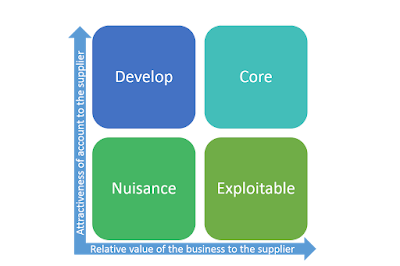Bus and train capacity has been increased, and police are out in force to ensure the multiple diversion routes are adhered to (Buses, HGV & LGV vehicles have been given the most direct route from 0500 to 2000 Monday to Friday).
Social Media is abuzz with information of diversion times, extra buses and sardine like trains - praise and complaint.
As someone who relies on the bridge, not least to get to Edinburgh airport (a normal 30 minute journey is now 90 minutes at best), I was pondering on the insights to be gleaned for procurement, and realise it's all about planning.
The sort of planning that procurement most often forgets to make time for too - especially for those more tactical, and less strategic departments where objectives and KPI's for procurement concentrate on price reduction, and ignore service provision, supplier management and value enhancement.
Planning such as:
- Communication Planning
- Contingency Planning
- Exit Planning
- Transition Planning
Stakeholder Engagement and Communication Planning
Traffic Scotland have been very quick to engage with the public. Not only providing details of the diversions and other options (rail and bus) but also progress on the repair to the bridge. Normal road users are still frustrated but the information available has been excellent. Social media has certainly helped them to do that - with a huge Twitter presence supported by Facebook and more obvious channels such as the web site.
Insights to be gleaned:
- Agree responsibility for communication - Traffic Scotland have taken the lead as "owners" of the trunk roads in Scotland which requires them to liaise closely with the bridge operator Amey who are undertaking the repair.
- Ensure you have an up to date list of stakeholders - in this situation it's included: the police, drivers who normally drive over the bridge, local residents and businesses, road hauliers, visitors (especially those flying into Edinburgh airport), media (local and national), politicians and alternate providers of transport (Scot Rail and Stagecoach).
- Complete a communication plan for each stakeholder - they won't all need the same information nor want it in the same way.
- To avoid speculation, rumour and Chinese whispers keep stakeholders updated with the facts as they emerge.
We had a very interesting breakout on contingency planning and exit planning on a recent supplier management workshop. I only wish I could have used the FRB as an example.
I'm sure many organisations got caught out due to the unforeseen nature of the closure, and therefore lack of contingency plans to refer to. For example I know Amazon, at the local distribution hub in Dunfermline, ended up paying temporary staff to tidy up the warehouse due to lack of product on the shelves when it first happened.
Insights to be gleaned:
- Ensure you have contingency plans for key suppliers, and key categories
- Update the contingency plans regularly
- Ensure roles and responsibilities are clear
- Don't just concentrate on the 'likely to happen' risks, remember to consider the high impact, even if low likelihood, risks too
- Understand and review contingency plans your suppliers have in place
- Know what you will do if supplier's contingency plans fail
Exit planning
I can imagine the call the person responsible for building the new Forth crossing had when the FRB closed. Apparently the new bridge build is under budget and on time for opening in Dec 2016, and I'm sure a call was made to ask "can you do it sooner?".
In this instance exit planning isn't too appropriate - however for many organisations moving to a new supplier might very well be an option when a supplier is unable to meet its contractual obligations.
Insights to be gleaned:
- Ensure you have exit plans for all key suppliers, and key categories
- Develop the exit plans with your suppliers
- Update the exit plans regularly
- Ensure roles and responsibilities are clear
- Agree the circumstances these plans would be executed
Transition planning
If recent documents are to believed then the fault with the bridge was known to the previous maintainer of the bridge in February. The question to be answered therefore is - was that information accurately passed on to the new maintainer in June.
As the bridge fault was very close to causing fatalities it's a horrifying reminder that transition planning isn't just one line on an action plan but requires much thought and planning:
- What information needs to be transferred
- How will the transfer be undertaken
- How will the information's efficacy be checked
- What handover is required - will both parties spend time together in meetings, and shadowing activities (most often avoided due to the costs involved)
- Who is responsible for what
I'd love to hear your thoughts on other insights procurement can take from the recent FRB closure, and any thoughts on my observations.
Alison Smith
Inspiring change inside and out





















